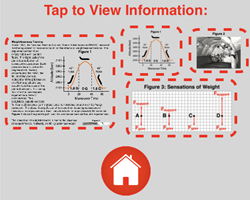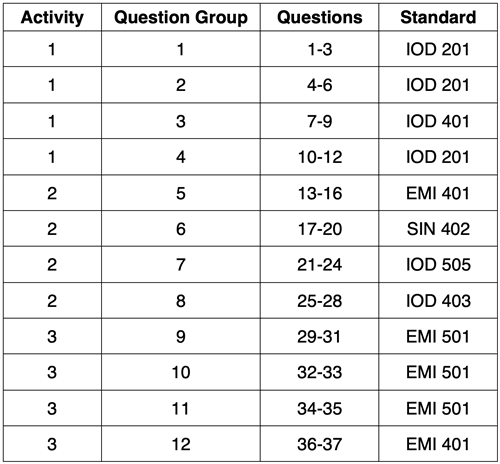About the Science Reasoning Center
 Highly Recommended
Highly RecommendedLike all our Science Reasoning Center activities, the completion of the Weightlessness Training activity requires that a student use provided information about a phenomenon, experiment, or data presentation to answer questions. This information is accessible by tapping on the small thumbnails found on the bottom right of every question. However, it may be considerably easier to have a printed copy of this information or to display the information in a separate browser window. You can access this information from this page.
The Standards
The Weightlessness Training activity presents information regarding NASA's effort to train astronauts to become accustomed to weightless sensations. Information is presented in the form of a graph, a photo and a diagram. Questions target a student's ability to interpret a graph and a diagram in light of a body of text, to select data values from a graph, to identify conclusions that are consistent with a model, and to translate information from one graph to another graph.
Success with the activity requires some degree of proficiency with respect to ...
- Analyzing and Interpreting Data (Science and Engineering Practice 4.1)
Analyze data using tools, technologies, and/or models (e.g., computational, mathematical) in order to make valid and reliable scientific claims or determine an optimal design solution. - Constructing Explanations and Designing Solutions (Science and Engineering Practice 6.3)
Apply scientific ideas, principles, and/or evidence to provide an explanation of phenomena and solve design problems, taking into account possible unanticipated effects. - Cause and Effect (Crosscutting Concept 2.2)
Systems can be designed to cause a desired effect. - Stability and Change (Crosscutting Concept 7.1)
Much of science deals with constructing explanations of how things change and how they remain stable.
While the Weightlessness Training activity addresses the two NextGen Science and Engineering Practices and the two crosscutting concept above, the activity drew its greatest inspiration from ACT's College Readiness Standards for Science Reasoning. The activity consists of 37 questions organized into 12 Question Groups that are spread across the three activities. All three strands (Interpretation of Data - IOD; Science Investigation - SIN; and Evaluation of Models, Inferences, and Experimental Results - EMI) of the College Readiness Standards are addressed in this activity. The code given for the standard includes three letters to indicate the strand and three numbers to indicate the specific standard within that strand. Higher numbers are indicative of more complex science reasoning skills. The relationship between the questions and the standards is as follows:

Complementary and Similar Resources
The following resources at The Physics Classroom website complement the Weightlessness Training Science Reasoning Activity. Teachers may find them useful for supporting students and/or as components of lesson plans and unit plans.
Physics Classroom Tutorial, Circular Motion Chapter: Weightlessness in Orbit
Physics Video Tutorial, Circular Motion: Weightlessness in Orbit
Physics Interactives, The Elevator Ride Simulation
Concept Builders, Newton's Laws: Normal Force Card Sort
Minds On Physics, Circular Motion and Gravitation: Mission CG9 - Weightlessness
Curriculum Corner, Circular Motion and Gravitation: Weightlessness
Recommended: Print Passage, Tables, and Graphs
Also see: